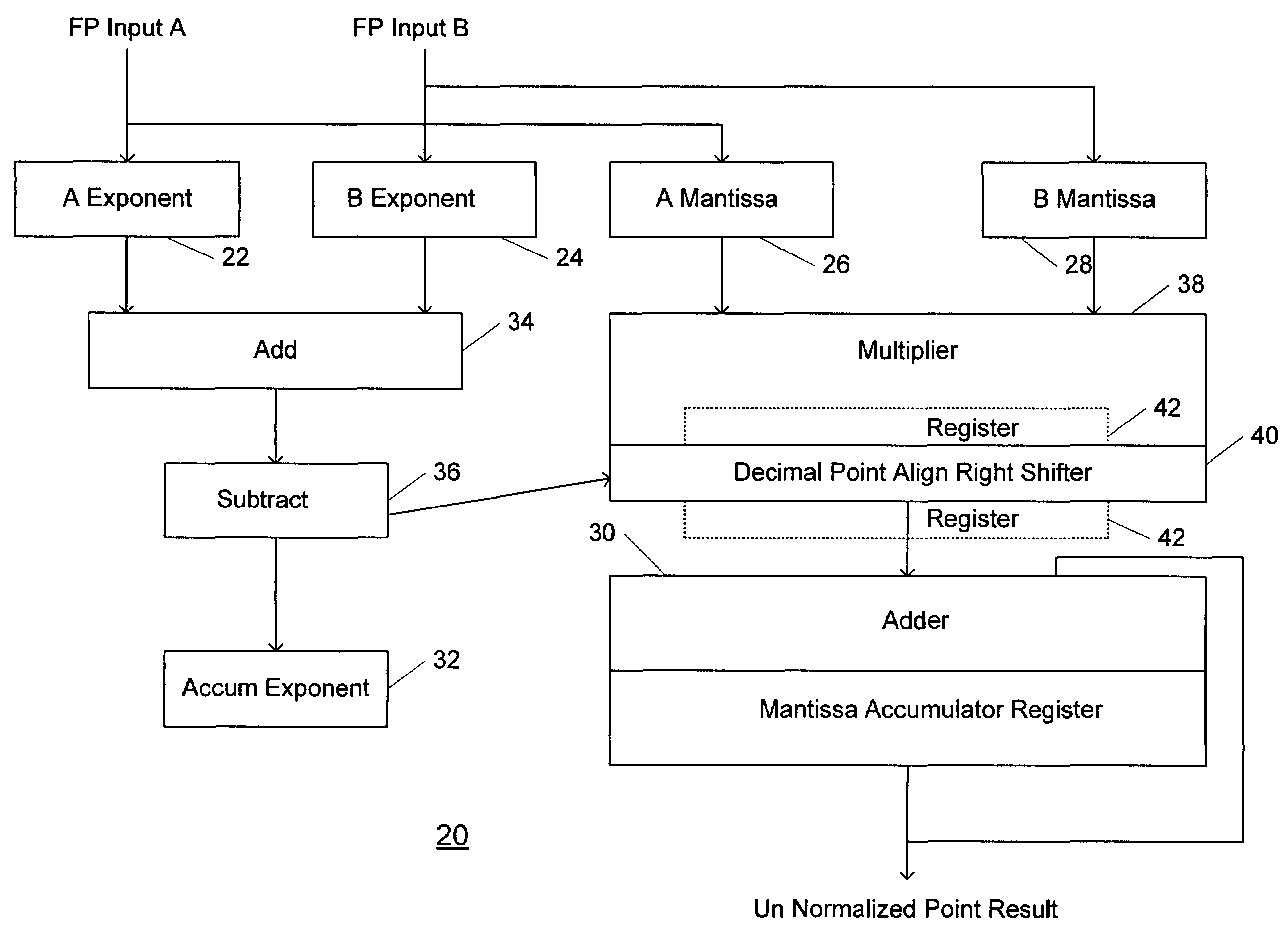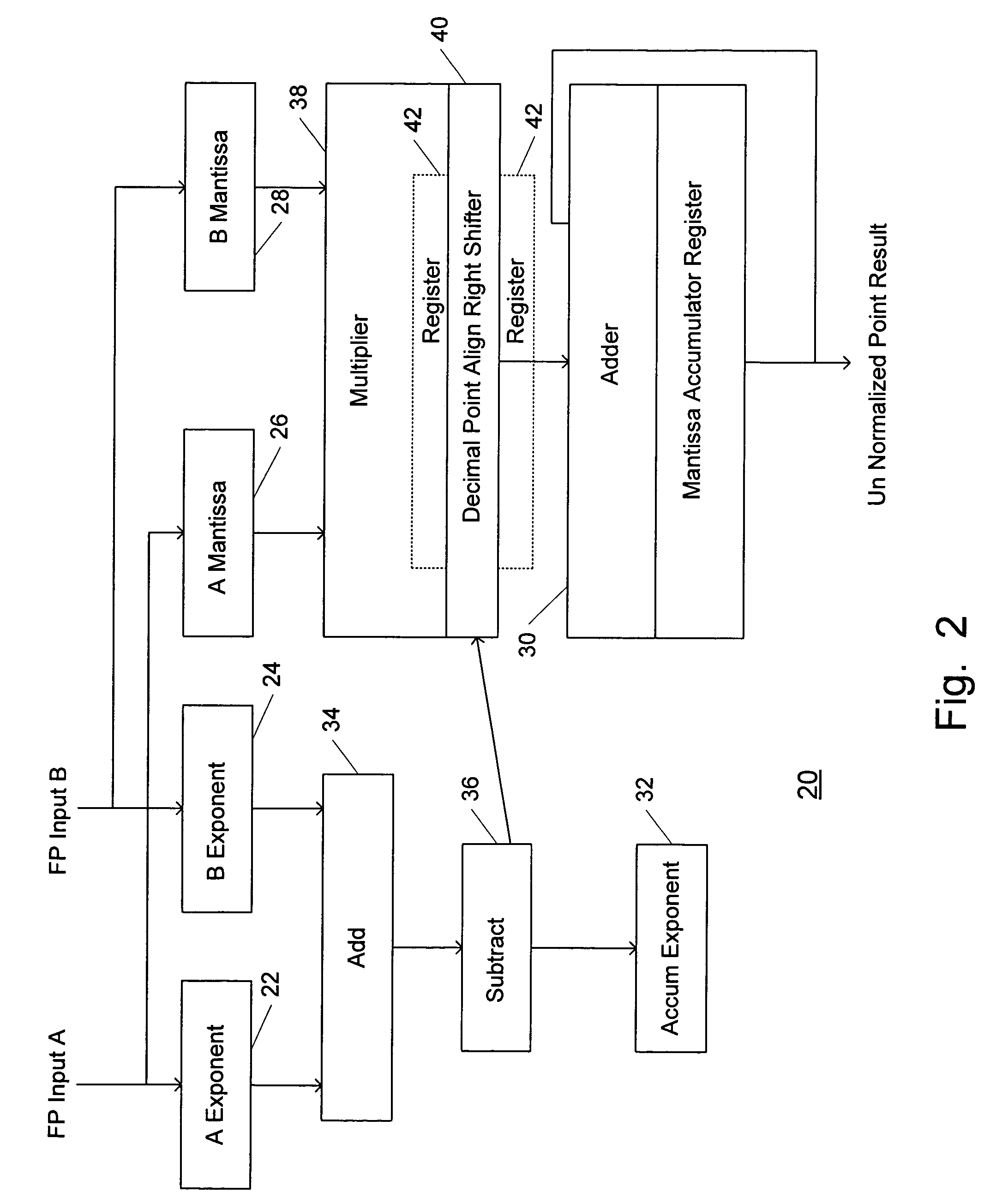Method and system for a floating point multiply-accumulator
a multiply-accumulator and floating point technology, applied in the field of floating point multiply-accumulators, can solve the problems of slow and complicated hardware of floating point dsp, and achieve the effect of fast and efficient floating point macs and similar performan
- Summary
- Abstract
- Description
- Claims
- Application Information
AI Technical Summary
Benefits of technology
Problems solved by technology
Method used
Image
Examples
Embodiment Construction
[0010]The present invention relates to a floating point multiply-accumulator that can do an accumulate on each clock. The following description is presented to enable one of ordinary skill in the art to make and use the invention and is provided in the context of a patent application and its requirements. Various modifications to the preferred embodiment and the generic principles and features described herein will be readily apparent to those skilled in the art. Thus, the present invention is not intended to be limited to the embodiment shown but is to be accorded the widest scope consistent with the principles and features described herein.
[0011]FIG. 2 shows a floating point multiply-accumulator (MAC) 20 in accordance with the present invention. As shown, the MAC 20 includes registers 22, 24, 26, and 28 for storing the exponents and mantissas portions of input floating point numbers A and B. The exponent registers 22 and 24 provide values to an add unit 34. The add unit 34 provide...
PUM
 Login to View More
Login to View More Abstract
Description
Claims
Application Information
 Login to View More
Login to View More - R&D
- Intellectual Property
- Life Sciences
- Materials
- Tech Scout
- Unparalleled Data Quality
- Higher Quality Content
- 60% Fewer Hallucinations
Browse by: Latest US Patents, China's latest patents, Technical Efficacy Thesaurus, Application Domain, Technology Topic, Popular Technical Reports.
© 2025 PatSnap. All rights reserved.Legal|Privacy policy|Modern Slavery Act Transparency Statement|Sitemap|About US| Contact US: help@patsnap.com



